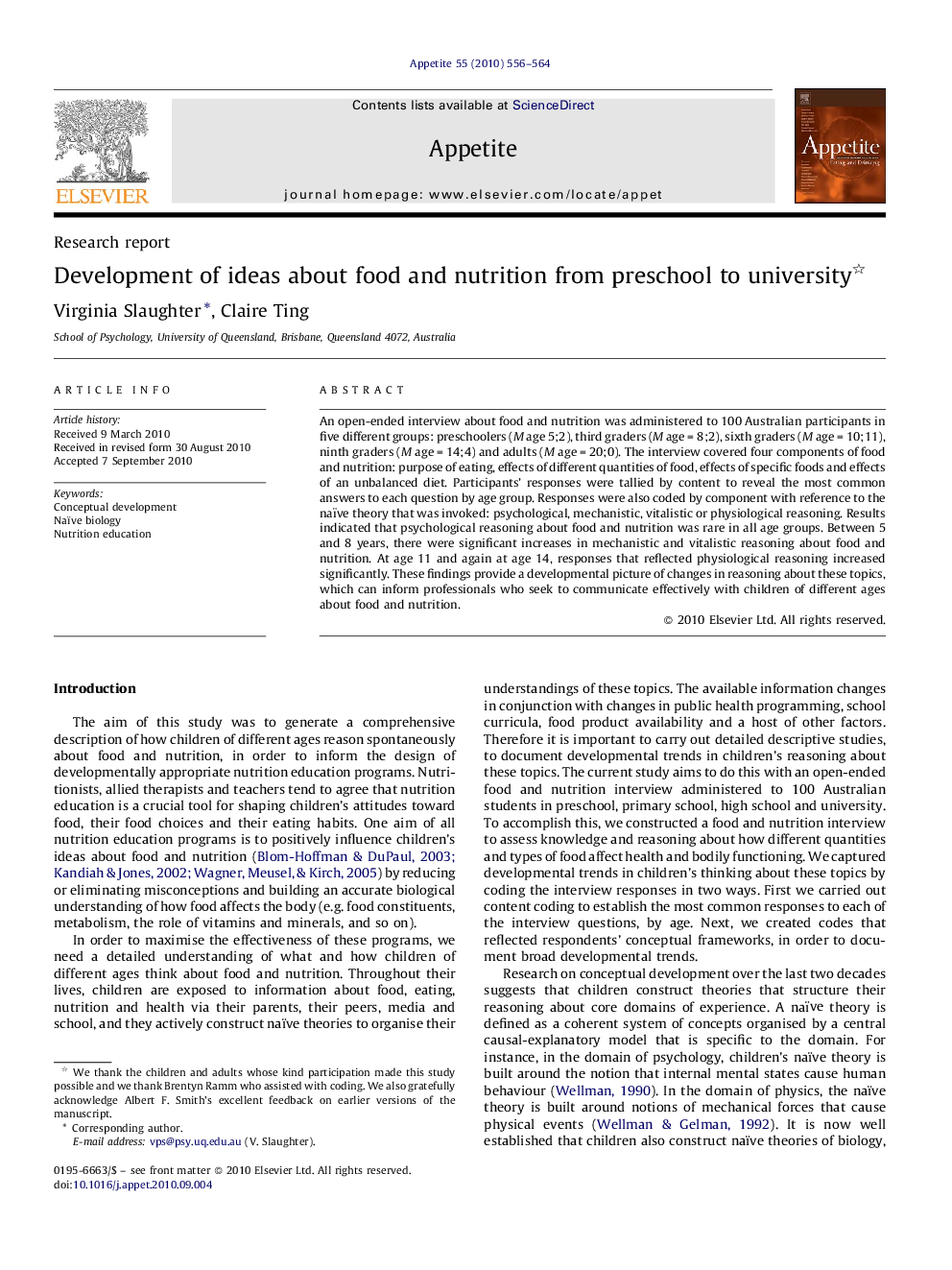| Article ID | Journal | Published Year | Pages | File Type |
|---|---|---|---|---|
| 940236 | Appetite | 2010 | 9 Pages |
An open-ended interview about food and nutrition was administered to 100 Australian participants in five different groups: preschoolers (M age 5;2), third graders (M age = 8;2), sixth graders (M age = 10;11), ninth graders (M age = 14;4) and adults (M age = 20;0). The interview covered four components of food and nutrition: purpose of eating, effects of different quantities of food, effects of specific foods and effects of an unbalanced diet. Participants’ responses were tallied by content to reveal the most common answers to each question by age group. Responses were also coded by component with reference to the naïve theory that was invoked: psychological, mechanistic, vitalistic or physiological reasoning. Results indicated that psychological reasoning about food and nutrition was rare in all age groups. Between 5 and 8 years, there were significant increases in mechanistic and vitalistic reasoning about food and nutrition. At age 11 and again at age 14, responses that reflected physiological reasoning increased significantly. These findings provide a developmental picture of changes in reasoning about these topics, which can inform professionals who seek to communicate effectively with children of different ages about food and nutrition.
